You are using an outdated browser. Please upgrade your browser to improve your experience and security.
Paul Theroux
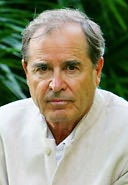
- Books By Paul Theroux
#9 in Travel Writing
#23 in Travel
The Great Railway Bazaar: By Train Through Asia
The Mosquito Coast
Dark Star Safari
Deep South: Four Seasons on Back Roads
The Old Patagonian Express: By Train Through the Americas
- Best American Travel Writing
- Pan Book of Horror Stories
- John McPhee
- Peter Matthiessen
- V.S. Naipaul
- Mikhail Bulgakov
- Tony Horwitz
- William Least Heat-Moon
- H. Rider Haggard
- Kingsley Amis
- J. Maarten Troost
- Bruce Chatwin
- Arthur Koestler
- James Jones
- Malcolm Lowry
- Colin Thubron
- Jason Wilson
- William Dalrymple
- Steve McCurry
- Norman Dietz

Books by Paul Theroux

$ 4.69 - $ 14.94
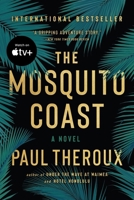
$ 4.79 - $ 13.84
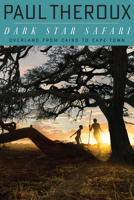
$ 4.99 - $ 17.41
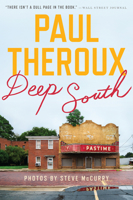
$ 4.89 - $ 14.94
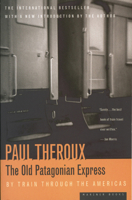
$ 4.69 - $ 37.88

The Pillars of Hercules: A Grand Tour of the Mediterranean
$ 4.19 - $ 18.74
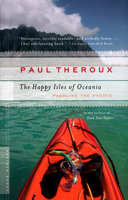
The Happy Isles of Oceania: Paddling the Pacific
$ 4.19 - $ 20.76

On the Plain of Snakes
$ 5.59 - $ 44.85

The Tao of Travel
$ 4.79 - $ 34.09
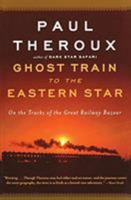
Ghost Train to the Eastern Star
$ 4.79 - $ 51.86
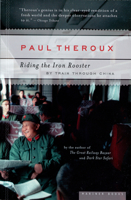
Riding the Iron Rooster
$ 3.89 - $ 16.23
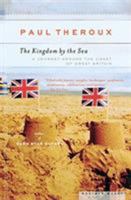
The Kingdom by the Sea
$ 4.89 - $ 13.74
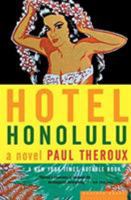
Hotel Honolulu
$ 5.09 - $ 14.51
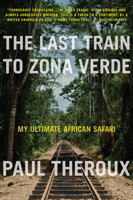
The Cold World
$ 4.39 - $ 34.89
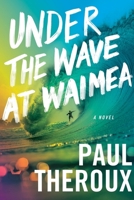
Under the Wave at Waimea: Library Edition
$ 4.69 - $ 26.39
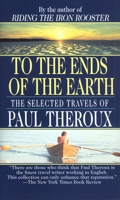
To the Ends of the Earth
$ 4.99 - $ 5.79

$ 7.59 - $ 29.49
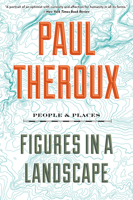
Figures in a Landscape
$ 5.69 - $ 14.04
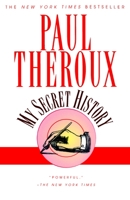
My Secret History
$ 4.39 - $ 23.91
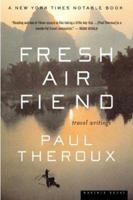
Fresh Air Fiend: Travel Writings
$ 5.39 - $ 23.16
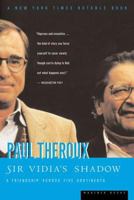
Sir Vidia's Shadow: A Friendship Across Five Continents
$ 5.19 - $ 20.94
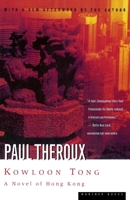
Kowloon Tong
$ 3.59 - $ 15.49
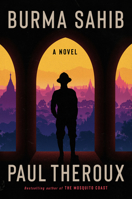
Burma Sahib: A Novel
$ 21.19 - $ 23.36
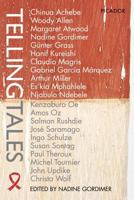
Telling Times
$ 3.69 - $ 16.63
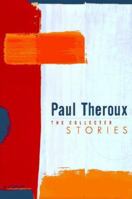
Paul Theroux: The Collected Stories
$ 5.09 - $ 7.89
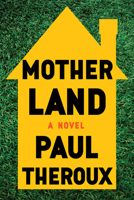
Mother Land
$ 5.59 - $ 14.04
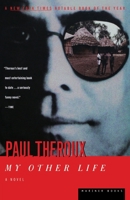
My Other Life
$ 4.89 - $ 20.92

Sailing Through China
$ 6.89 - $ 17.19

The Imperial Way: By Rail from Peshawar to Chittagong
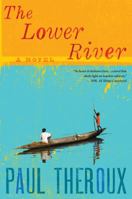
The Lower River
$ 4.29 - $ 17.73
Popular Categories
- Teen and Young Adult
- Literature & Fiction
- Mystery & Thriller
- Sci-fi & Fantasy
- Large Print Books
- Rare & Collectible Books
- ShareBookLove
- Educator Benefits
- Librarian Benefits
- e-Gift Cards
- View Mobile Site
- Shopping Cart
- Order History
Partnerships
- Library Program
- Help & Support
- Shipping Costs
- Return Policy
- Website Suggestions
- Our Purpose
- Social Responsibility
- Testimonials
- NONFICTION BOOKS
- BEST NONFICTION 2023
- BEST NONFICTION 2024
- Historical Biographies
- The Best Memoirs and Autobiographies
- Philosophical Biographies
- World War 2
- World History
- American History
- British History
- Chinese History
- Russian History
- Ancient History (up to 500)
- Medieval History (500-1400)
- Military History
- Art History
- Travel Books
- Ancient Philosophy
- Contemporary Philosophy
- Ethics & Moral Philosophy
- Great Philosophers
- Social & Political Philosophy
- Classical Studies
- New Science Books
- Maths & Statistics
- Popular Science
- Physics Books
- Climate Change Books
- How to Write
- English Grammar & Usage
- Books for Learning Languages
- Linguistics
- Political Ideologies
- Foreign Policy & International Relations
- American Politics
- British Politics
- Religious History Books
- Mental Health
- Neuroscience
- Child Psychology
- Film & Cinema
- Opera & Classical Music
- Behavioural Economics
- Development Economics
- Economic History
- Financial Crisis
- World Economies
- Investing Books
- Artificial Intelligence/AI Books
- Data Science Books
- Sex & Sexuality
- Death & Dying
- Food & Cooking
- Sports, Games & Hobbies
- FICTION BOOKS
- BEST NOVELS 2024
- BEST FICTION 2023
- New Literary Fiction
- World Literature
- Literary Criticism
- Literary Figures
- Classic English Literature
- American Literature
- Comics & Graphic Novels
- Fairy Tales & Mythology
- Historical Fiction
- Crime Novels
- Science Fiction
- Short Stories
- South Africa
- United States
- Arctic & Antarctica
- Afghanistan
- Myanmar (Formerly Burma)
- Netherlands
- Kids Recommend Books for Kids
- High School Teachers Recommendations
- Prizewinning Kids' Books
- Popular Series Books for Kids
- BEST BOOKS FOR KIDS (ALL AGES)
- Ages Baby-2
- Books for Teens and Young Adults
- THE BEST SCIENCE BOOKS FOR KIDS
- BEST KIDS' BOOKS OF 2023
- BEST BOOKS FOR TEENS OF 2023
- Best Audiobooks for Kids
- Environment
- Best Books for Teens of 2023
- Best Kids' Books of 2023
- Political Novels
- New History Books
- New Historical Fiction
- New Biography
- New Memoirs
- New World Literature
- New Economics Books
- New Climate Books
- New Math Books
- New Philosophy Books
- New Psychology Books
- New Physics Books
- THE BEST AUDIOBOOKS
- Actors Read Great Books
- Books Narrated by Their Authors
- Best Audiobook Thrillers
- Best History Audiobooks
- Nobel Literature Prize
- Booker Prize (fiction)
- Baillie Gifford Prize (nonfiction)
- Financial Times (nonfiction)
- Wolfson Prize (history)
- Royal Society (science)
- Pushkin House Prize (Russia)
- Walter Scott Prize (historical fiction)
- Arthur C Clarke Prize (sci fi)
- The Hugos (sci fi & fantasy)
- Audie Awards (audiobooks)
Make Your Own List
Nonfiction Books » Travel
The best travel books, recommended by paul theroux.

The Mosquito Coast by Paul Theroux
Travel is a leap in the dark, says Paul Theroux and one that will leave you a different person at the other end. He recommends five travel books that inspired him, from Mark Twain at sea to VS Naipaul in India
Interview by Alec Ash
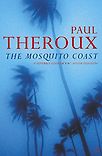
The Worst Journey in the World by Apsley Cherry-Garrard
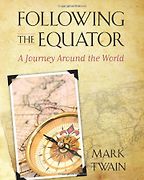
Following the Equator by Mark Twain
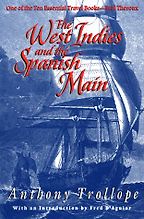
The West Indies and the Spanish Main by Anthony Trollope
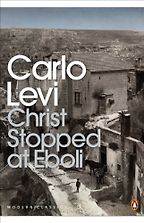
Christ Stopped at Eboli by Carlo Levi
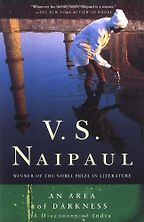
An Area of Darkness: A Discovery of India by V.S. Naipaul
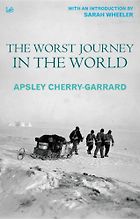
1 The Worst Journey in the World by Apsley Cherry-Garrard
2 following the equator by mark twain, 3 the west indies and the spanish main by anthony trollope, 4 christ stopped at eboli by carlo levi, 5 an area of darkness: a discovery of india by v.s. naipaul.
W hat is it about travel, as a literary genre, that draws you in?
And what does a journey itself bring to the surface in the traveller?
It brings the unknown. A journey awakens all our old fears of danger and risk. Your life is on the line. You are living by your own resources, you have to find your own way, and solve every problem on the road. What to eat, where to sleep, what to do if you get sick. In the books that I chose here, the traveller is at risk in almost every case. The appeal of travel books is also the sense that you are different, an outsider, almost like the Robinson Crusoe or Christopher Columbus notion of being the first person in a new place. You are so conspicuous that it’s like first contact – you’re the alien.
The act of writing that experience down, recalling it later for an audience – does that change, in retrospect or at the time, the nature of the trip?
If a person knows in advance that they are going to be writing a book, then they set off with the idea of taking notes, and there is a sense of self-consciousness. Here I am, I’m getting on a bus, I’m talking to people, I’m confronting the culture. But that’s the nature of the beast.
Is it a cliché to say that a physical journey is always also an interior journey?
It happens to be a cliché in which there is a lot of truth. Any outer journey is also an inner journey. Writing fiction is also an inner journey. But the inner journey of travel is intensified by solitude. If people go hiking with their wife in the Alps, that is not the same thing as going alone. When you come home at night, have a drink and talk about the day with your spouse, that is different from being alone, writing your notes, and having a drink in a solitude which makes you reflect very deeply on your motives, and why your wife or husband isn’t there. So the inner journey is the journey taken by the solitary traveller.
In my early years of travelling, in the early sixties in a village in Malawi, I didn’t have a telephone or a fax machine. All I had was the weekly mail – and sometimes that didn’t come. Travelling with a cell phone is also a form of travelling with someone else. To really travel alone means to have no access to the outside – no phone or Internet. I can tell you from experience that being in central Africa without any contact with the outside world forces you to learn the language, make friends and live with the people. You return to yourself. But if you have an iPad, you have weather reports, the news, and a spouse or friend at the other end.
Was it when you were in Malawi, with the Peace Corps after graduating, that you realised you wanted to write this kind of book yourself?
I wanted to – and did – write a lot before I went to Africa. But I didn’t have much to write about, which is generally the case when you’re at home or at university. You can’t write about your family, because family is a problem. You don’t really understand your family until you’re 50 or 60 years old, when you finally figure them out. Being in Africa gave me a subject in the people I met – Americans, British, Africans, Indians, all more interesting than myself – and in a place that hadn’t been described.
When I went to Nyasaland, as Malawi was called in 1963, it had no face. There was no narrative there. It wasn’t the heart of darkness, as some people thought. It was small, poor, but quite well settled. There was no race problem – it wasn’t a colony where people were badly treated. There were tea estates, there was sugar, cotton. Peanuts and poverty. It was a backwater. I wasn’t expecting it to be cold, but in the south African winter it got quite chilly. I wasn’t expecting the people to be as nice as they were, as literate, as Christian. On the other hand, I was also in places that were benighted.
You have described yourself at that time as an “angry and agitated young man”. With a bit more of life behind you, how do you look back at your 20-year-old self when you were beginning to travel and write?
I was angry and agitated, but there was a lot to be angry and agitated about. South Africa had a white-dominated government, and the apartheid there was really severe. Nelson Mandela went to jail in 1963, when I first arrived in Africa, and stayed there for 27 years. There was forced labour in Portuguese colonies into the sixties. At the same time, it was illegal in 23 American states for blacks to marry whites. And the generation just above me just accepted it, segregation and all. Then there was the Vietnam war. Everyone I knew thought it was ridiculous, unfair and destructive, but you couldn’t get anyone to listen about that either. Enlightenment only came in the mid to late sixties.
So I wasn’t a crank, but I was angry. And I was awakened to this largely because I had left home, because I went to Africa, because I was a traveller. As a traveller you are able to see your own country more clearly, how the world works and how the political process plays out – often as tyranny, or with rigged elections. You see the effects of poverty, and the grandiose claims that imperial nations make about the mission to civilise, which in practice doesn’t happen. There were no real paved roads in Malawi, and only a couple of doctors. Imperialism was a racket. Colonies were run like farms, like estates where you get people to work for you and then keep the money from the proceeds.
Do you read travel books while on your journeys? Or at home in the armchair?
When I’m travelling, I tend to read books about something completely different. When I was in Africa, I read DH Lawrence and Herman Melville. I don’t read many travel books anyway, although I read or reread hundreds to compile The Tao of Travel . These days it would have to be a very good travel book for me to sit down and read it – one of the greats that I’m talking about here. Travel books get sent to me all the time, from publishers and from writers saying “I hope you like my book”. I always look at them, but I don’t always find them compelling, or get to the end. I’m interested in reading about journeys that I’d like to take myself, though, or where the traveller has to solve a lot of problems.
Why should we read travel literature, if you don’t?
Let’s transport ourselves with your list. Your first choice, The Worst Journey in the World , is a classic of travel literature – a huge book, loved by many.
This is a great book because it was a terribly difficult journey – an ordeal. Apsley Cherry-Garrard was 22, the youngest and in a way the frailest member of Scott’s expedition [to the South Pole in 1911-1912]. The worst journey in the world which he describes isn’t Scott’s race to the pole, it’s Cherry-Garrard’s trip with two other men to find the emperor penguins. The book is framed by Scott’s expedition, but the quest for the penguins is the centre of it.
It’s a book about a young man who is inexperienced, not particularly strong and with bad eyesight, travelling with other men who are great explorers, mentally very strong, physically powerful and who have travelled to many places before, both hot and cold. Among the many things that appeal to me about the book is the extreme precision of the writing – the scientific poetry of it. Cherry-Garrard also had the major advantage of being a neighbour of George Bernard Shaw. He writes about the weather, the quality of the snow, and all aspects of the trip there in this old banger of a boat, a coal ship called the Terra Nova . The book starts very dramatically, and gets better and better.
To what extent do you think this book and this journey says something universal about solitude, endurance and the human condition – or is that grandiose?
It’s not grandiose. This is about going to the last frontier, the last undiscovered place. No one had gone to the South Pole. No one had seen the emperor penguins. No one had endured that sort of cold. They record a temperature of minus 79 Fahrenheit. It’s a form of hell – the bottom of Dante’s hell is ice, if you remember.
The trip was not just about enduring and surviving this, it was a scientific expedition, unlike [Roald] Amundsen. Amundsen was a skier, and his only mission was to get to the pole. He wasn’t interested in penguins, he just wanted to get to the prize, and he did. The Scott expedition was not as focused. It was a group of men with different notions and personalities, and the leader, Scott himself, was a problem. He was mentally frail, he cried very easily, and he was something of a manic depressive. He got sad and stayed in his tent for long periods. A lot of explorers were like that – [David] Livingstone for example. And in the Antarctic winter there is no sunshine, it’s dark 24 hours a day, which isn’t good if you’re depressive.
Do you think we are drawn to journeys with pain and difficulty? A travelogue of a journey which went off without a hitch wouldn’t be as appealing, somehow.
No, it wouldn’t. A blissful travel book is much less appealing than a travel book which is about an ordeal, because we like to see people tested to their limits. War stories, stories of captivity and escape, or survival, are compelling because those are problems that people face in their lives, to a much lesser extent. The ideal travel book is about someone pushed to their limits, and overcoming the obstacles rather than succumbing to them.
So when we talk about the humanising affects of travel, we really mean of suffering?
How does Mark Twain fit in here, and his journey around the English-speaking world in Following the Equator ?
All of these books that I have chosen helped me on my way, and made me want to write a book myself. These are books that inspire writing. Mark Twain is always taught as the man who wrote Huckleberry Finn and Tom Sawyer , not the man who wrote Following the Equator . It’s the book of a man who loves to travel and loves meeting people. His is an enormous trip. He travels all around the world by steamship on a lecture tour, largely around the British Empire – stopping off in India, Australia, South Africa. He had travelled in Europe before, but Europe doesn’t figure in this book. It’s more the tropical, equatorial world.
He set out in 1894 because he found himself practically bankrupt in America.
He was bankrupt because he made a bad investment. Twain always had a lot of schemes, but his major one was a typesetting machine. That was actually a great idea, and if he had put more money in and had more time it probably would have panned out and become profitable. But it didn’t, he lost almost all of his money and went on this lecture tour.
I like the humour in the book, and the roominess. He is open to a lot of new experiences, whether it’s in Hawaii or India or South Africa. He’s open to anything, and it’s that receptive mood of the book that I liked. It’s also a book which I discovered myself. I found an old copy, I read it and I asked English professors about it, who dismissed it. But it influenced me deeply, because I thought: I’d like to take a long trip, leaving London, going to Paris, taking the Orient Express, going through Turkey, Iran, Afghanistan – which became The Great Railway Bazaar . That all came from this book.
Twain also includes fictional stories within the book – tall tales like Cecil Rhodes finding a newspaper in the belly of a shark.
That’s right. There are short stories within the narrative.
How does that work in the context of a nonfiction travel book? Which, after all, we have to trust as being true.
Every travel writer who is worth the name makes his own book. One of the problems with the travel book is that no one knows quite what it is. It’s a very insufficient form, unlike the novel which is a fairly specific thing. The travel book can even be like a novel. Bruce Chatwin said that Songlines should be read like a novel. I never took it as such, but he claimed that he invented and fictionalised a lot.
A lot of people are angry at Chatwin for that, because it feels like a betrayal.
Well, Chatwin was very exuberant about the fact that he was making this up. He was one of a kind, and a master of concealment. I had this conversation with him several times. I don’t think he particularly liked the kind of books that I wrote, and I felt that the books he wrote were an expression of his own forms of concealment – but even in concealment there is a truth. In a way, you know what he is leaving out. In the end, he just wanted to write his own kind of book, and I don’t think that is a betrayal. He was self-dramatising, though, and tended to make a meal of things. He got arrested in Dahomey once, was only held one night in a jail, but you would think he was Alexander Solzhenitsyn from the way he wrote about it.
Does every travel writer do that – embellish, dramatise, even fictionalise?
Anthony Trollope, on the way to the West Indies, does complain rather a lot about such mundane troubles as seasickness and so on.
But he’s funny about it. Did you notice the common denominator in my book choices? Three of them – Naipaul, Trollope and Twain – are novelists. That is first of all because I am. A novelist should be a good traveller. And second because the ability to write fiction – to describe someone, to write dialogue – is helpful to someone writing a travel book.
How else do a novelist’s concerns cross over with a travel writer’s?
It’s what Conrad said about his intentions in writing: “To make you hear, to make you feel… before all, to make you see ”. Trollope has that ability in spades. He is tremendously gregarious and very funny. He wrote The West Indies and the Spanish Main on the trip itself, and when his ship arrived back in Britain the book was done. It is a vivid portrait of a lot of different places – Cuba, Jamaica, Trinidad, Nicaragua – and he had a great ability to describe people, both in a physical sense and in how they talked. He is a wonderful writer of dialogue, both in his travel books and in his novels. Twain had that too, whereas Cherry-Garrard didn’t.
If drawing characters is one area where being a novelist comes in handy for a travel writer, is there not the temptation to partly invent people and dialogue?
I don’t think there’s the temptation to fictionalise. There might be a temptation to over-describe. You want to make the characters live. It’s like what I said earlier about leaving the boring bits out. The poor travel writer puts everything down. The good travel writer is selective. And the travel writer who is also a fiction writer knows how to choose what matters in the journey. Naipaul knew that, Trollope knew it, and I hope that I know it. Because the last thing that you want to be is a bore. The problem with people talking about their travels is that they tend to be pretty boring. There are those who are great raconteurs, and have people on the edges of their chairs, but most people are terribly boring when talking about their holidays or year abroad. We did this, then we went there – you can edit that all out.
I gather Trollope undertook this journey for a British postal survey.
Why does Christ Stopped at Eboli deserve a spot among your five?
I chose this book because not many people know it – it’s hardly on every bookshelf. Carlo Levi was an Italian Jew from Florence, banished in the 1930s by the Mussolini government for criticising the war in Ethiopia. He is sent to the ends of the earth, and it happens that the ends of the earth in Italy is southern Italy – a hermetic hilltown village called Aliano which at the time was the edge of civilisation. It’s not Eboli – the point is that Christ stopped at Eboli, and Eboli is some distance away. He never got as far as Aliano.
The locals had never seen strangers before. They believed in dragons and were superstitious. When I wrote my book The Pillars of Hercules I went to the village, and they remembered Carlo Levi as “the Jew”. Levi described them as living the old way. His sister comes to visit him, but can’t live with him because in the village no man can live with a woman who is not his wife or his mother. But he’s a doctor, so he’s helpful. And he is very observant. He sees their traditions, their language, the way they look. These are the original Italians, he says, and they look Italic – they’re not descendants of the Ostragoths, the invaders and the Greeks. Levi is buried in Aliano. The grave is very obscure, and the town hasn’t changed much.
What stuck with me about the book was a sense of very deep understanding of the place, born both from him being an outsider, with that freshness of perspective, but also from his having been there for an extended period of time. Is it tricky for a travel writer, who passes through a country rather than staying there, to match that?
Certainly. That’s also why I chose this. Cherry-Garrard’s trip is an ordeal, an exploration. Trollope’s is a sort of sideline – he writes about these places while doing a job. Whereas this book has resonance, and a strong sense of place that you could only get from living there. While Carlo Levi was there for an extended period of time, though, he also never lost sight of the fact that he was an alien. The police used to visit him.
But sometimes you can travel through a place and sum it up, seeing it clearly in a way that you might not if you had lived there – because in order to live in a place, you have to close your eyes to much of it. When I was in Angola, a lot of people who lived there couldn’t bear to look at it because it was so difficult, dysfunctional and improvisational. I found it hard talking to people in Angola about Angola, because it was like living in a smoke-filled room. They lived in a society where people were just trying to get through the day.
Last but not least, you have chosen VS Naipaul’s An Area of Darkness , a travelogue of his journeys in India in the early sixties.
I read this before I met VS Naipaul , in East Africa. I have known him very well over the years, as you might know from my book Sir Vidia ’ s Shadow . This book really impressed me, and meeting him I then saw how he travelled – how he provoked people into saying things. His manner of travel was to put someone on the back foot, to ask questions like “Why do you do this?” and demand answers. He was very provocative in general when he was in East Africa. He was exasperated, discouraged – he’s a depressive person, and an angry one.
But the book is wonderful. He knows how to write about landscape. He knows how to write dialogue. He’s funny. He has novelistic gifts that he brings to his nonfiction. Obviously he left a lot out – the main thing being that he was with his wife. He never mentions her.
It’s a deeply personal journey for him, going to India for the first time.
Absolutely. It’s a book about an Indian who goes to India and realises that he has no place there – it’s an area of darkness for him, because he’s lost his sense of caste. Naipaul writes well about being wrong. He goes on a pilgrimage and quarrels with people, and those quarrels are part of the book. A travel book is never all roses, and he writes very candidly about his foibles. Not all of them, but many of them. And that was helpful to me – like all of these books it taught me something. But knowing the writer, and having both the book and the person to compare it against, is different.
Do the two match up?
No, of course not. Half of the time in Africa, Naipaul was so rude and provocative that I thought somebody was going to hit him. You can see a writer’s personality in their books, but the writer themself never matches up to it. They’re not all tall as you think they are going to be, or as urbane. They have foibles. They get cranky. They’re fussy. But the book itself feels whole, and you can’t help but think: How did this weak, flawed person manage to write this book? The writer as a person is more like the valet to the person who wrote the book.
How much of you is in your new novel, The Lower River – especially given its Malawian setting, where you spent your own early twenties?
How could it be me? It’s a novel, and a man that I have invented. I’ve been there, but not in the same circumstances. I see it rather as a book about captivity. A man whose life is up the wall goes to Africa with good intentions, and isn’t allowed to leave.
Get the weekly Five Books newsletter
He also feels like a captive in small town Massachusetts, before he goes back to Africa where he spent his early years.
That too. He describes his marriage as a digression – his real life was in Malawi, when he was alone. That’s the other thing about travel. You are, and can be, yourself. People don’t know you, so their expectations aren’t the same. He felt captive in his job and in his marriage, and he travels back to Malawi. But then he can’t get away. That’s the nightmare of a lot of travellers. You go to a place, and then they say you can’t go. You’re stuck.
June 15, 2012
Five Books aims to keep its book recommendations and interviews up to date. If you are the interviewee and would like to update your choice of books (or even just what you say about them) please email us at [email protected]
Support Five Books
Five Books interviews are expensive to produce. If you've enjoyed this interview, please support us by donating a small amount .
Paul Theroux
Theroux is an American travel writer and novelist, whose best known work of travel writing is perhaps The Great Railway Bazaar (1975). He has published numerous works of fiction, some of which were made into feature films. He was awarded the 1981 James Tait Black Memorial Prize for his novel The Mosquito Coast on which the 1986 movie is based.
We ask experts to recommend the five best books in their subject and explain their selection in an interview.
This site has an archive of more than one thousand seven hundred interviews, or eight thousand book recommendations. We publish at least two new interviews per week.
Five Books participates in the Amazon Associate program and earns money from qualifying purchases.
© Five Books 2024
- Search Please fill out this field.
- Manage Your Subscription
- Give a Gift Subscription
- Newsletters
- Sweepstakes
Paul Theroux
Paul Theroux is a prolific travel writer and the author of more than 50 highly acclaimed books. His 1981 novel “The Mosquito Coast” won the James Tait Black Memorial Prize and was later adapted into the 1986 film of the same name. It was later adapted into an Apple TV+ show by his nephew, actor, and screenwriter Justin Theroux. Several of Paul's other books have been made into films and received awards, including the Whitbread Prize for Best Novel (“Picture Palace”) and the Thomas Cook Travel Book Award (“Riding the Iron Rooster”). His travelogue “The Old Patagonian Express: By Train Through the Americas” and “The Mosquito Coast” were both nominated for the American Book Award. In 2015, Paul was awarded a Royal Medal from the Royal Geographical Society for “the encouragement of geographical discovery through travel writing.” In addition to his books, he has written extensively for Time, The New Yorker, The Atlantic, and Smithsonian, among other publications. Born in Medford, Massachusetts, Paul began his travels in 1963 after joining the Peace Corps and spending several years in Africa. He has lived in various countries around the world, including Malawi, Uganda, Singapore, and the UK. He currently calls Hawaii and Cape Cod home. • 45+ years of experience as a writer and novelist • Author of 50+ acclaimed fiction and nonfiction books • Won the American Academy and Institute of Arts & Letters Award for literature, the Whitbread Prize, the James Tait Black Award, the Maria Thomas Fiction Award (lifetime achievement), the Patron's Medal from the Royal Geographical Society, and many other awards • Fellow at the Royal Society of Literature and Royal Geographical Society in the UK • Received honorary doctorates from Trinity College in Washington, D.C., and Tufts University in Medford, Massachusetts • Received a bachelor’s degree in English from the University of Massachusetts Amherst
About Travel + Leisure
Travel + Leisure, a Dotdash Meredith Brand , is a top travel media brand with a mission to inform and inspire passionate travelers. Our expert team includes a network of hundreds of writers and photographers across the globe, all providing a local eye on the best places to stay, eat, and explore. We reach an audience that takes 76 million round trips annually, offering valuable travel tips, ideas and inspiration, and products you need to get you to your destination — whether it’s a small town or big city, beach or lake, national park or theme park, road trip, cruise, or long-haul flight, and everything in between. Learn more about us and our editorial process

The Best Travel Books to Inspire Your Next Trip
T he weather is getting a bit cooler, the holiday season is approaching, which means that many of us are putting our adventures on hold. However, what if you still want to ignite your wanderlust, but without actually leaving the comfort of your own home? Travel books are the answer! Honestly, they are the next best thing to actually traveling. And if you're not of that opinion, then you probably didn't come across the right ones. That's why we've made a list of soul-stirring books that will spark your imagination and fuel your desire for exploration. So let's get into the list of best travel books right away, shall we?
“The Alchemist” by Paulo Coelho
“The Alchemist” is a story about Join Santiago, a young shepherd. This young man is on a mystical quest for hidden treasure across the deserts of Egypt , finding much more than just jewels and gold. Brimming with profound wisdom and timeless insights, this international bestseller is a testament to the power of following your dreams. But also the transformative journey of self-discovery. Through Santiago’s adventures, Coelho weaves a captivating tale that encourages readers to embrace the unknown and embark on their own personal novel. Further reminding us that every journey is a quest for the soul.

“Into the Wild” by Jon Krakauer
Venture into the untamed wilderness of Alaska alongside Christopher McCandless . This young man is on a quest for ultimate freedom and adventure in Jon Krakauer’s gripping narrative, “Into the Wild.” Based on a true story, this compelling story delves into McCandless’s solitary journey and his search for connection with nature. Krakauer’s storytelling skillfully captures the magic and dangers of the wilderness. Which also reminds us of the transformative power of the great outdoors. But also the human spirit’s resilience in the face of untamed landscapes.
“The Great Railway Bazaar” by Paul Theroux
Hop aboard Paul Theroux’s epic train journey across Europe and Asia in “The Great Railway Bazaar.” This classic travelogue paints a vivid picture of the diverse cultures, landscapes, and people he encounters along the way. Theroux’s witty observations and keen eye for detail bring to life the charm and eccentricities of train travel. You will feel like you yourself are on a slow travel adventure and exploring the hidden gems of railway landscapes. This delightful travelogue is a must-read for anyone seeking to embrace the joy of the journey and the thrill of discovering new horizons.
“Wild: From Lost to Found on the Pacific Crest Trail” by Cheryl Strayed
Embark on a soul-stirring journey with Cheryl Strayed as she hikes the challenging Pacific Crest Trail. This brave woman is seeking solace and redemption in the wake of personal tragedy. Strayed’s gripping memoir, “Wild,” is a testament to the transformative power of nature. But also human resilience in the face of adversity. Through her courageous and often humorous accounts, readers are reminded of the healing properties of the great outdoors. But also of the powerful feeling that comes with solo travel and self-discovery. With vivid descriptions of the trail’s rugged beauty and her own emotional turmoil, Strayed’s narrative captures the essence of finding strength in the wilderness and embracing the untamed spirit within.
The Unique Burial of a Child of Early Scythian Time at the Cemetery of Saryg-Bulun (Tuva)
<< Previous page
Pages: 379-406
In 1988, the Tuvan Archaeological Expedition (led by M. E. Kilunovskaya and V. A. Semenov) discovered a unique burial of the early Iron Age at Saryg-Bulun in Central Tuva. There are two burial mounds of the Aldy-Bel culture dated by 7th century BC. Within the barrows, which adjoined one another, forming a figure-of-eight, there were discovered 7 burials, from which a representative collection of artifacts was recovered. Burial 5 was the most unique, it was found in a coffin made of a larch trunk, with a tightly closed lid. Due to the preservative properties of larch and lack of air access, the coffin contained a well-preserved mummy of a child with an accompanying set of grave goods. The interred individual retained the skin on his face and had a leather headdress painted with red pigment and a coat, sewn from jerboa fur. The coat was belted with a leather belt with bronze ornaments and buckles. Besides that, a leather quiver with arrows with the shafts decorated with painted ornaments, fully preserved battle pick and a bow were buried in the coffin. Unexpectedly, the full-genomic analysis, showed that the individual was female. This fact opens a new aspect in the study of the social history of the Scythian society and perhaps brings us back to the myth of the Amazons, discussed by Herodotus. Of course, this discovery is unique in its preservation for the Scythian culture of Tuva and requires careful study and conservation.
Keywords: Tuva, Early Iron Age, early Scythian period, Aldy-Bel culture, barrow, burial in the coffin, mummy, full genome sequencing, aDNA
Information about authors: Marina Kilunovskaya (Saint Petersburg, Russian Federation). Candidate of Historical Sciences. Institute for the History of Material Culture of the Russian Academy of Sciences. Dvortsovaya Emb., 18, Saint Petersburg, 191186, Russian Federation E-mail: [email protected] Vladimir Semenov (Saint Petersburg, Russian Federation). Candidate of Historical Sciences. Institute for the History of Material Culture of the Russian Academy of Sciences. Dvortsovaya Emb., 18, Saint Petersburg, 191186, Russian Federation E-mail: [email protected] Varvara Busova (Moscow, Russian Federation). (Saint Petersburg, Russian Federation). Institute for the History of Material Culture of the Russian Academy of Sciences. Dvortsovaya Emb., 18, Saint Petersburg, 191186, Russian Federation E-mail: [email protected] Kharis Mustafin (Moscow, Russian Federation). Candidate of Technical Sciences. Moscow Institute of Physics and Technology. Institutsky Lane, 9, Dolgoprudny, 141701, Moscow Oblast, Russian Federation E-mail: [email protected] Irina Alborova (Moscow, Russian Federation). Candidate of Biological Sciences. Moscow Institute of Physics and Technology. Institutsky Lane, 9, Dolgoprudny, 141701, Moscow Oblast, Russian Federation E-mail: [email protected] Alina Matzvai (Moscow, Russian Federation). Moscow Institute of Physics and Technology. Institutsky Lane, 9, Dolgoprudny, 141701, Moscow Oblast, Russian Federation E-mail: [email protected]
Shopping Cart Items: 0 Cart Total: 0,00 € place your order
Price pdf version
student - 2,75 € individual - 3,00 € institutional - 7,00 €

Copyright В© 1999-2022. Stratum Publishing House
- Yekaterinburg
- Novosibirsk
- Vladivostok

- Tours to Russia
- Practicalities
- Russia in Lists
Rusmania • Deep into Russia
Out of the Centre
Savvino-storozhevsky monastery and museum.

Zvenigorod's most famous sight is the Savvino-Storozhevsky Monastery, which was founded in 1398 by the monk Savva from the Troitse-Sergieva Lavra, at the invitation and with the support of Prince Yury Dmitrievich of Zvenigorod. Savva was later canonised as St Sabbas (Savva) of Storozhev. The monastery late flourished under the reign of Tsar Alexis, who chose the monastery as his family church and often went on pilgrimage there and made lots of donations to it. Most of the monastery’s buildings date from this time. The monastery is heavily fortified with thick walls and six towers, the most impressive of which is the Krasny Tower which also serves as the eastern entrance. The monastery was closed in 1918 and only reopened in 1995. In 1998 Patriarch Alexius II took part in a service to return the relics of St Sabbas to the monastery. Today the monastery has the status of a stauropegic monastery, which is second in status to a lavra. In addition to being a working monastery, it also holds the Zvenigorod Historical, Architectural and Art Museum.
Belfry and Neighbouring Churches

Located near the main entrance is the monastery's belfry which is perhaps the calling card of the monastery due to its uniqueness. It was built in the 1650s and the St Sergius of Radonezh’s Church was opened on the middle tier in the mid-17th century, although it was originally dedicated to the Trinity. The belfry's 35-tonne Great Bladgovestny Bell fell in 1941 and was only restored and returned in 2003. Attached to the belfry is a large refectory and the Transfiguration Church, both of which were built on the orders of Tsar Alexis in the 1650s.

To the left of the belfry is another, smaller, refectory which is attached to the Trinity Gate-Church, which was also constructed in the 1650s on the orders of Tsar Alexis who made it his own family church. The church is elaborately decorated with colourful trims and underneath the archway is a beautiful 19th century fresco.
Nativity of Virgin Mary Cathedral

The Nativity of Virgin Mary Cathedral is the oldest building in the monastery and among the oldest buildings in the Moscow Region. It was built between 1404 and 1405 during the lifetime of St Sabbas and using the funds of Prince Yury of Zvenigorod. The white-stone cathedral is a standard four-pillar design with a single golden dome. After the death of St Sabbas he was interred in the cathedral and a new altar dedicated to him was added.

Under the reign of Tsar Alexis the cathedral was decorated with frescoes by Stepan Ryazanets, some of which remain today. Tsar Alexis also presented the cathedral with a five-tier iconostasis, the top row of icons have been preserved.
Tsaritsa's Chambers

The Nativity of Virgin Mary Cathedral is located between the Tsaritsa's Chambers of the left and the Palace of Tsar Alexis on the right. The Tsaritsa's Chambers were built in the mid-17th century for the wife of Tsar Alexey - Tsaritsa Maria Ilinichna Miloskavskaya. The design of the building is influenced by the ancient Russian architectural style. Is prettier than the Tsar's chambers opposite, being red in colour with elaborately decorated window frames and entrance.

At present the Tsaritsa's Chambers houses the Zvenigorod Historical, Architectural and Art Museum. Among its displays is an accurate recreation of the interior of a noble lady's chambers including furniture, decorations and a decorated tiled oven, and an exhibition on the history of Zvenigorod and the monastery.
Palace of Tsar Alexis

The Palace of Tsar Alexis was built in the 1650s and is now one of the best surviving examples of non-religious architecture of that era. It was built especially for Tsar Alexis who often visited the monastery on religious pilgrimages. Its most striking feature is its pretty row of nine chimney spouts which resemble towers.

Plan your next trip to Russia
Ready-to-book tours.
Your holiday in Russia starts here. Choose and book your tour to Russia.
REQUEST A CUSTOMISED TRIP
Looking for something unique? Create the trip of your dreams with the help of our experts.

Download the free Kindle app and start reading Kindle books instantly on your smartphone, tablet, or computer - no Kindle device required .
Read instantly on your browser with Kindle for Web.
Using your mobile phone camera - scan the code below and download the Kindle app.

Image Unavailable
- To view this video download Flash Player
Moscow Oblast Regional Investment and Business Guide Paperback
- Publisher Int'l Business Publications, USA
- ISBN-10 073970849X
- ISBN-13 978-0739708491
- See all details

Product details
- ISBN-10 : 073970849X
- ISBN-13 : 978-0739708491
Customer reviews
Customer Reviews, including Product Star Ratings help customers to learn more about the product and decide whether it is the right product for them.
To calculate the overall star rating and percentage breakdown by star, we don’t use a simple average. Instead, our system considers things like how recent a review is and if the reviewer bought the item on Amazon. It also analyzed reviews to verify trustworthiness.
No customer reviews
- Amazon Newsletter
- About Amazon
- Accessibility
- Sustainability
- Press Center
- Investor Relations
- Amazon Devices
- Amazon Science
- Sell on Amazon
- Sell apps on Amazon
- Supply to Amazon
- Protect & Build Your Brand
- Become an Affiliate
- Become a Delivery Driver
- Start a Package Delivery Business
- Advertise Your Products
- Self-Publish with Us
- Become an Amazon Hub Partner
- › See More Ways to Make Money
- Amazon Visa
- Amazon Store Card
- Amazon Secured Card
- Amazon Business Card
- Shop with Points
- Credit Card Marketplace
- Reload Your Balance
- Amazon Currency Converter
- Your Account
- Your Orders
- Shipping Rates & Policies
- Amazon Prime
- Returns & Replacements
- Manage Your Content and Devices
- Recalls and Product Safety Alerts
- Conditions of Use
- Privacy Notice
- Consumer Health Data Privacy Disclosure
- Your Ads Privacy Choices

IMAGES
COMMENTS
Paul Theroux has 229 books on Goodreads with 403769 ratings. Paul Theroux's most popular book is The Great Railway Bazaar: By Train Through Asia. Home; My Books; ... The Tao of Travel: Enlightenments from Lives on the Road by. Paul Theroux.
On the plain of snakes: A Mexican Journey (2019) Legendary travel writer Paul Theroux drives the entire length of the US-Mexico border, then goes deep into the hinterland, on the back roads of Chiapas and Oaxaca, to uncover the rich, layered world behind today's brutal headlines. BUY BOOK HERE.
See all books authored by Paul Theroux, including The Great Railway Bazaar: By Train Through Asia, and The Mosquito Coast, and more on ThriftBooks.com. ... The Tao of Travel. Paul Theroux $4.79 - $34.09. Ghost Train to the Eastern Star. Paul Theroux $4.79 - $51.86. Riding the Iron Rooster. Paul Theroux $3.89 - $16.23.
"A book to be plundered and raided." — New York Times Book Review "A portal into a world of timeless travel literature curated by one of the greatest travel writers of our day." — USA Today Paul Theroux celebrates fifty years of wandering the globe in this collection of the best writing from the books that have shaped him as a reader and a traveler.
Paul Edward Theroux (/ θ ə ˈ r uː /; born April 10, 1941) is an American novelist and travel writer who has written numerous books, including the travelogue The Great Railway Bazaar (1975). Some of his works of fiction have been adapted as feature films. He was awarded the 1981 James Tait Black Memorial Prize for his novel The Mosquito Coast, which was adapted for the 1986 movie of the ...
Paul Theroux has now returned to the United States, but he continues to travel widely. Paul Theroux's many books include Picture Palace, which won the 1978 Whitbread Literary Award; The Mosquito Coast, which was the 1981 Yorkshire Post Novel of the Year and joint winner of the James Tait Black Memorial Prize, and was also made into a feature ...
The Best Travel Books recommended by Paul Theroux. The Mosquito Coast by Paul Theroux Read. Travel is a leap in the dark, says Paul Theroux and one that will leave you a different person at the other end. He recommends five travel books that inspired him, from Mark Twain at sea to VS Naipaul in India.
Paul Theroux has now returned to the United States, but he continues to travel widely. Paul Theroux's many books include Picture Palace, which won the 1978 Whitbread Literary Award; The Mosquito Coast, which was the 1981 Yorkshire Post Novel of the Year and joint winner of the James Tait Black Memorial Prize, and was also made into a feature ...
Paul Theroux is a prolific travel writer and the author of more than 50 highly acclaimed books. His 1981 novel "The Mosquito Coast" won the James Tait Black Memorial Prize and was later ...
Audio CD - December 14, 2004. Internationally acclaimed author Paul Theroux adds Fresh Air Fiend, named a New York Times Notable Book, to his highly praised travel writings. A collection of essays, this intimate and fascinating book explores five continents and many cultures, while delving deep into the mind of Theroux.
Paul Theroux, American novelist and travel writer known for his highly personal observations on many locales. His works included the novels The Mosquito Coast (1982) and Under the Wave at Waimea (2021) and the travel books The Great Railway Bazaar (1975) and Deep South (2015).
Paul Theroux ('The world's most perceptive travel writer'--Daily Mail) is the author of many highly acclaimed works of fiction and nonfiction, including The Great Railway Bazaar (1975), The Mosquito Coast (1981) Riding the Iron Rooster (1983), and Mr. Bones: Twenty Stories (2014).In 2015, Paul Theroux was awarded a Royal Medal from the Royal Geographical Society for "the encouragement ...
Hop aboard Paul Theroux's epic train journey across Europe and Asia in "The Great Railway Bazaar." This classic travelogue paints a vivid picture of the diverse cultures, landscapes, and ...
Skip to main content.us
In 1938, it was granted town status. [citation needed]Administrative and municipal status. Within the framework of administrative divisions, it is incorporated as Elektrostal City Under Oblast Jurisdiction—an administrative unit with the status equal to that of the districts. As a municipal division, Elektrostal City Under Oblast Jurisdiction is incorporated as Elektrostal Urban Okrug.
In 1988, the Tuvan Archaeological Expedition (led by M. E. Kilunovskaya and V. A. Semenov) discovered a unique burial of the early Iron Age at Saryg-Bulun in Central Tuva. There are two burial mounds of the Aldy-Bel culture dated by 7th century BC. Within the barrows, which adjoined one another, forming a figure-of-eight, there were discovered ...
Paul Theroux has now returned to the United States, but he continues to travel widely. Paul Theroux's many books include Picture Palace, which won the 1978 Whitbread Literary Award; The Mosquito Coast, which was the 1981 Yorkshire Post Novel of the Year and joint winner of the James Tait Black Memorial Prize, and was also made into a feature ...
Zvenigorod's most famous sight is the Savvino-Storozhevsky Monastery, which was founded in 1398 by the monk Savva from the Troitse-Sergieva Lavra, at the invitation and with the support of Prince Yury Dmitrievich of Zvenigorod. Savva was later canonised as St Sabbas (Savva) of Storozhev. The monastery late flourished under the reign of Tsar ...
Paul Theroux has now returned to the United States, but he continues to travel widely. Paul Theroux's many books include Picture Palace, which won the 1978 Whitbread Literary Award; The Mosquito Coast, which was the 1981 Yorkshire Post Novel of the Year and joint winner of the James Tait Black Memorial Prize, and was also made into a feature ...
Moscow Oblast Regional Investment and Business Guide on Amazon.com. *FREE* shipping on qualifying offers. Moscow Oblast Regional Investment and Business Guide